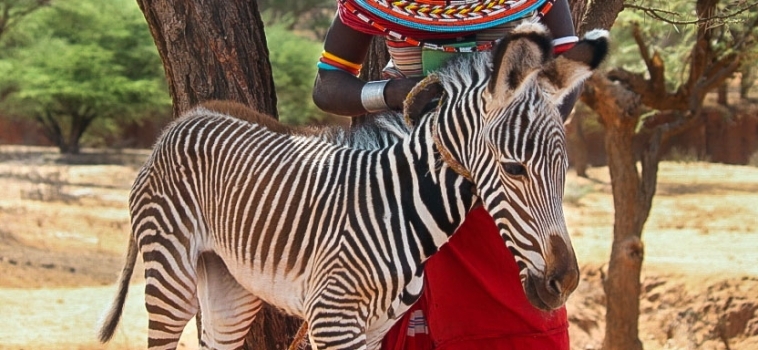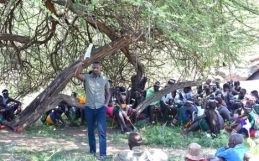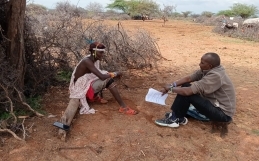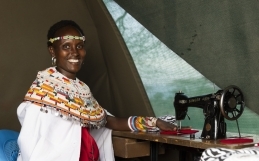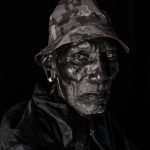Story by Andrew Letura
It was a normal working day for Patin Lebasha, a Grevy’s Zebra Scout. As she was doing her patrols and recording data she came across a small living thing in the distance that appeared to be like a gazelle, but, since she was in doubt of what she was seeing, she decided to better her vision with a pair of binoculars that she always carries with her.
Oh!! She couldn’t believe her eyes to confirm that little gazelle she had in mind was actually a beautiful foal of a Grevy’s zebra lying on a small sandy patch between the bushes.
The mother of the foal quickly crept into her mind and she scanned the area around her to find her, but there was sign of the mother. After that, she had no choice other than to use her bush skills of tracking Grevy’s zebra spoor to try and find out the direction that the mum went. As she was doing that, she notified me on what was happening. I advised her to keep looking for the mum of the foal and I contacted Meibae Conservancy about the case and they further alerted their scout from the area Mr Lenaiyasa who joined Patin and together they watched the Grevy’s zebra foal from a distance so as not to disturb it or the return of its mother.
At the same time I shared the information and updates with the rest of the team and informed the Kenya Wildlife Service vet, Dr. Matthew Mutinda.
Hours elapsed, and the dedicated scouts continued their vigil and sharing the state of the situation on the ground. As the sun slowly slipped below the horizon and there was no sign of the foal’s mother, the scouts got increasingly worried about what would happen as this area is notorious for hyena predation.
After some discussion it was agreed that Patin would take the foal home with her. This was at first thought unwise by Mr. Lenaiyasa as they were worried of the cultural omens attached if a zebra comes into one’s home. This omen is attached to wildlife species that are taboo in Samburu culture to eat and also includes warthogs and certain bird species.

Silango and GZT Scout
As darkness crept up though the scouts decided to go against the usual cultural norms and they gathered their strength around the theme “Kitamata Kule eng’oituko!” meaning “We have drunk zebra milk!” Milk here means the benefit that they both gain from being employed in conservation. The tiny foal trustingly followed his new guardians and together they arrived at Patin’s nearby homestead where the rest of the village welcomed them.
On the morning of the following day, David (our driver) and I arrived to pick the foal up after obtaining permission from the nearby KWS station. Our mission was to take it to Lewa Wildlife Conservancy where it would be cared for at their orphanage.
The villagers had by this time developed a strong bond with the foal and the children stayed next to the foal while the elders kept watch from a distance. As we drove with the foal in the Grevy’s Zebra Trust Land cruiser, the villagers urged us to name the foal “Silango” after the name of their village. We left them with their faces full of hope for the little foal which they had taken into their home and cared for.
Soon afterwards, Silango found a new home at Lewa orphanage where he bonded with one of their rhino orphans.

© Sarah Watson
Several days later Silango suddenly developed colic which he eventually succumbed to. Wild Grevy’s zebra are notoriously difficult to hand-raise, especially one as young as Silango who we estimated to be less than a week old. Despite his short life, he touched many people and will live on in the hearts of the Silango community.
